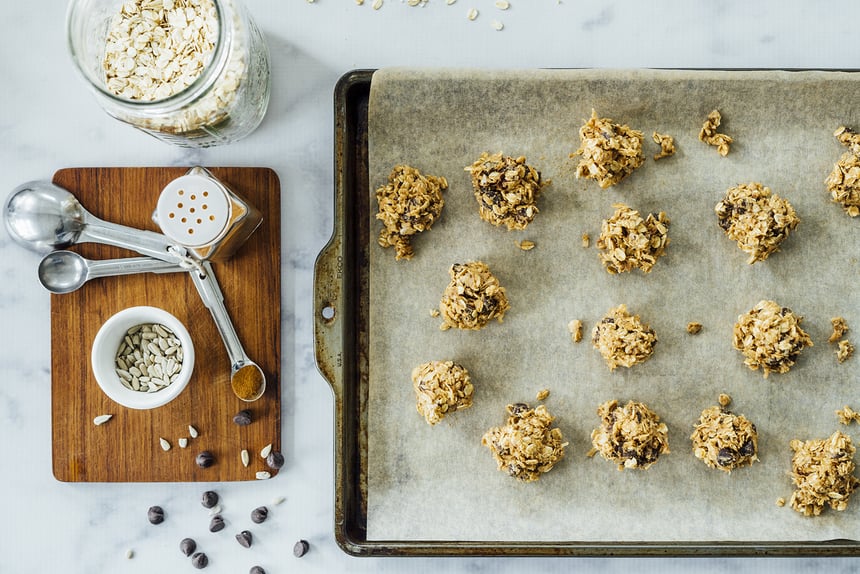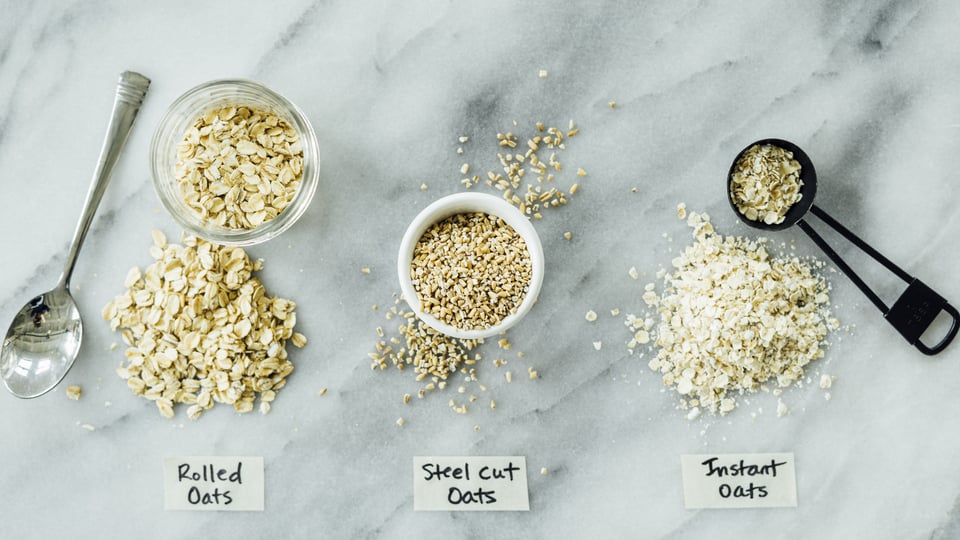This hearty, heart-healthy pantry staple is a family favorite for baking and breakfast. But do you know the difference between each type of oat? Oats come in different shapes and sizes, and each type is best for certain recipes. Here’s the scoop on the three kinds of oats you’re most likely to see at the grocery store.
Old-Fashioned Oats
These are the oat groats, which are the hulled kernels of the oat plant which have been dehusked and steamed. They are rolled flat into flakes under heavy rollers and then lightly toasted — sometimes called “rolled oats.”
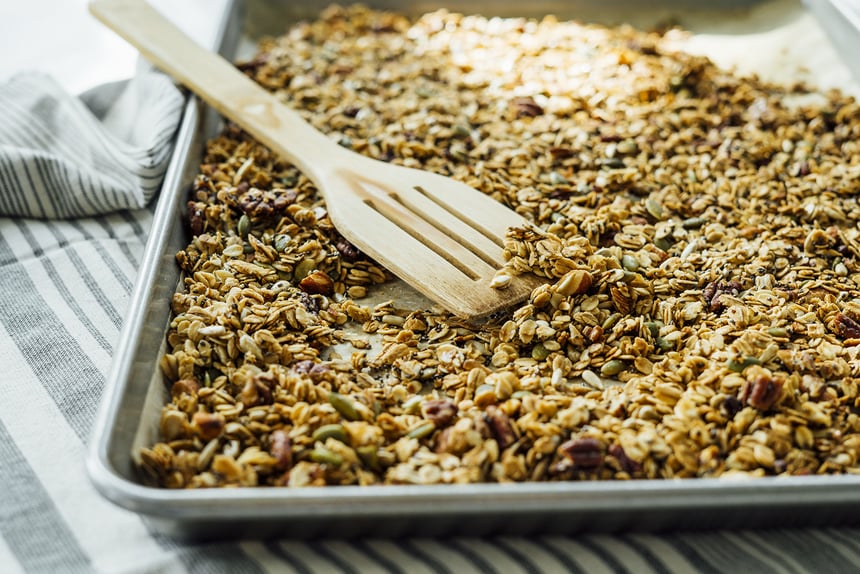
- Best for: Making traditional oatmeal or overnight oats, homemade granola, old-fashioned oatmeal cookies, whole grain pancakes and DIY oat flour.
- Tip: To make your own oat milk, soak rolled oats overnight, then blend in a high powered blender with water, a touch of sweetner and a teaspoon of vanilla extract. Strain through a fine mesh cheesecloth for a nutritious dairy milk alternative.
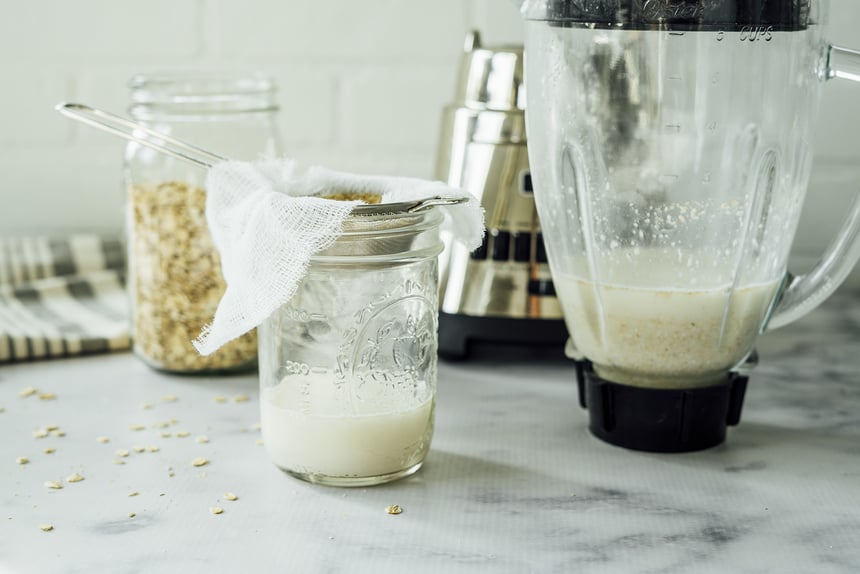
Steel-Cut Oats
Sometimes called “pinhead oats,” or “Irish oatmeal,” these are the groats of whole oats that simply have been chopped into a few pieces. The least-processed oats of the bunch, nutty, chewy steel-cut oats are incredibly high in protein and fiber.
- Best for: Slow-cooker oatmeal, overnight oats.
- Tip: Steel-cut oats can take up to an hour to cook through until tender. Soaking them overnight cuts cooking time in half.
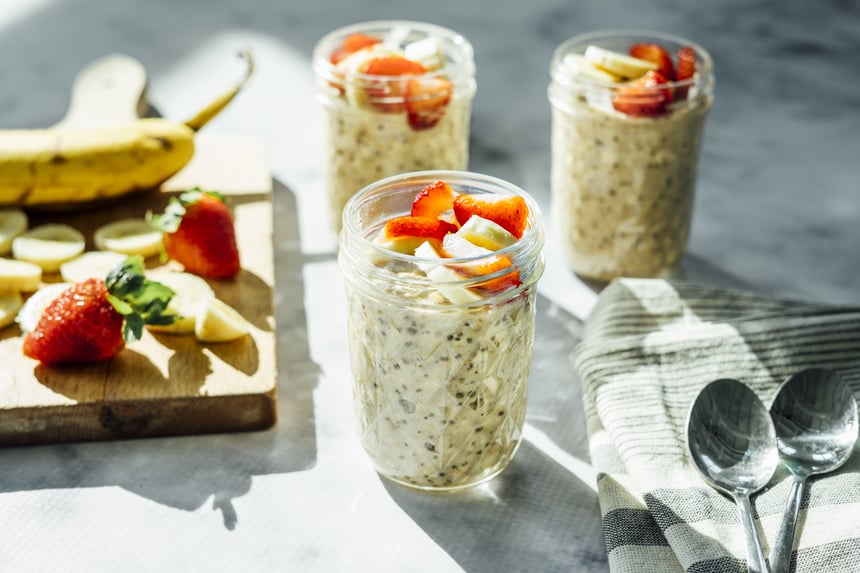
Instant Oats
These go through a process similar to old-fashioned oats, but instant oats are thinner and more fragmented, which allows water to be absorbed much faster during cooking. They are still high in vitamins and fiber, though are less nutrient-dense than old-fashioned and steel-cut oats. Look out for pre-packaged flavored instant oatmeal, which is often loaded with sugar and preservatives.
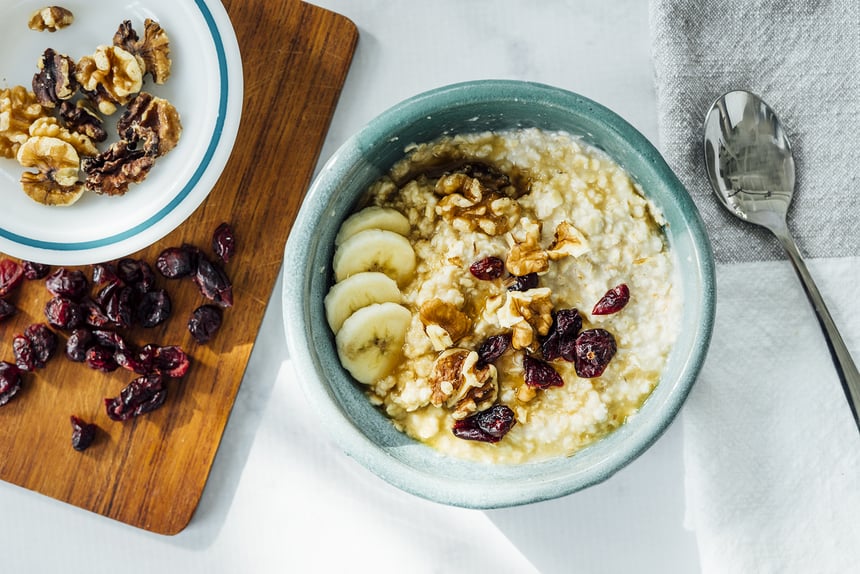
- Best for: Porridge, homemade baby food, “no-bake” cookies or energy bites.
- Tip: Instant oats quickly become mushy and do not perform well as an ingredient in baked goods.
